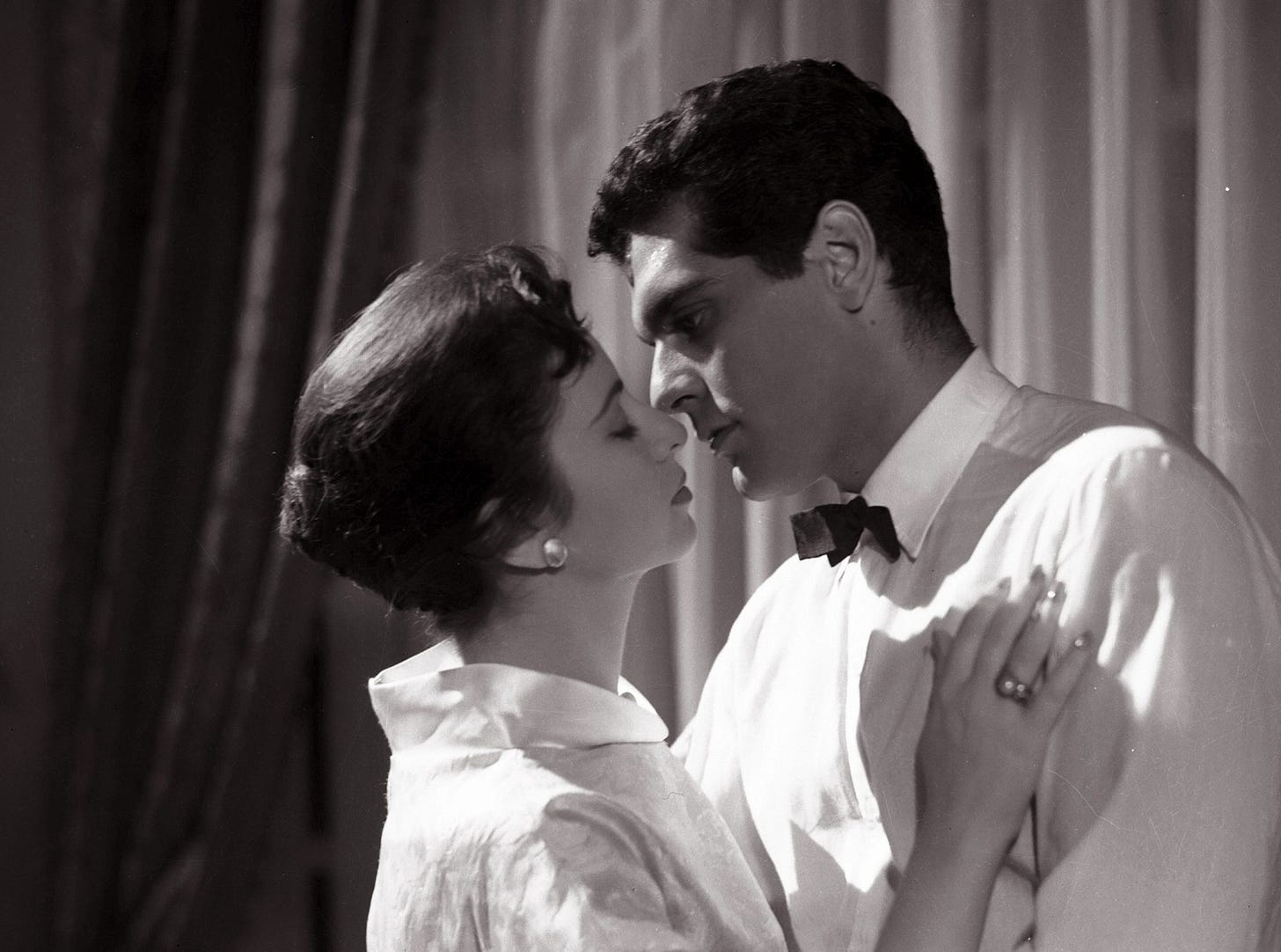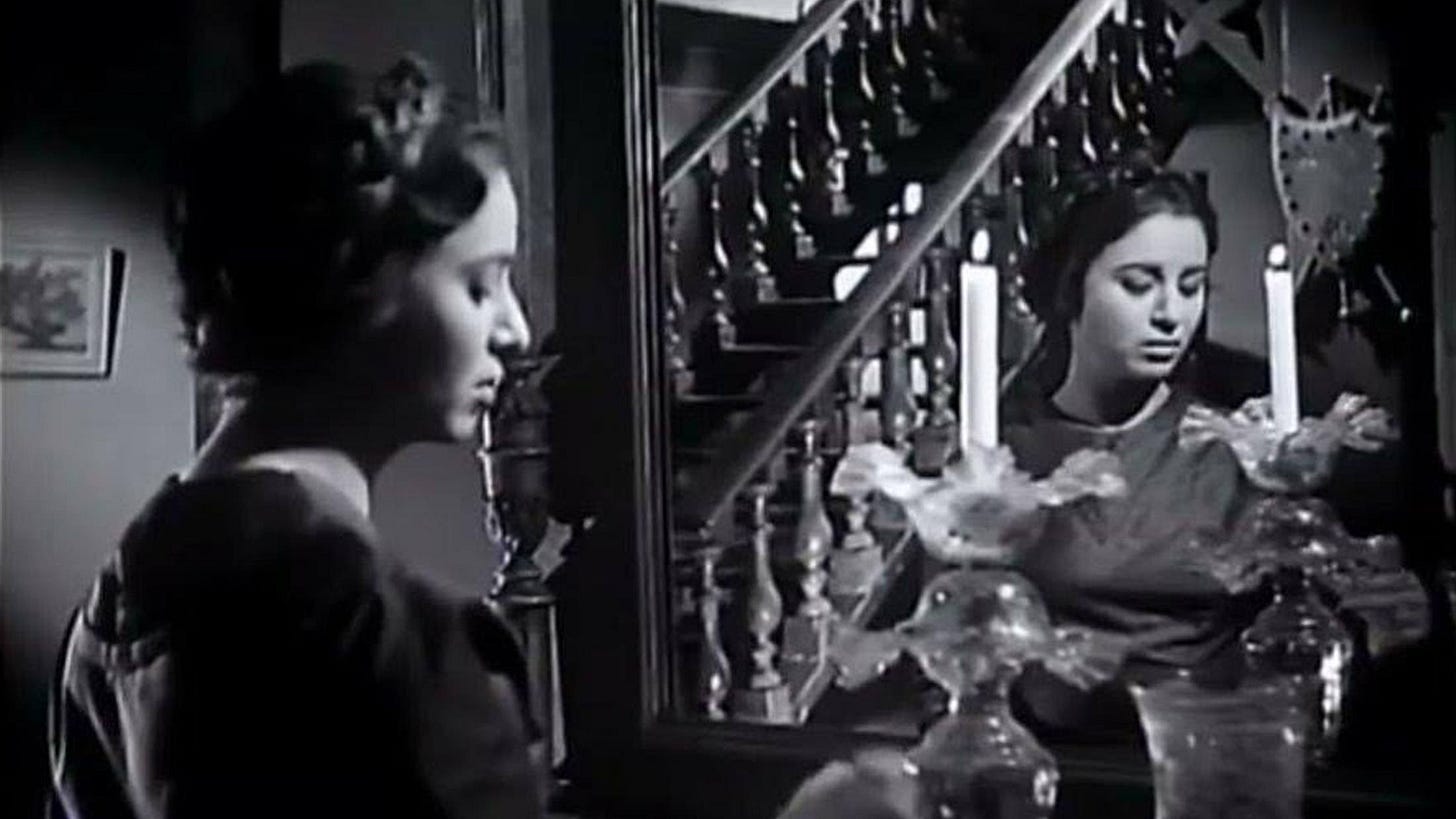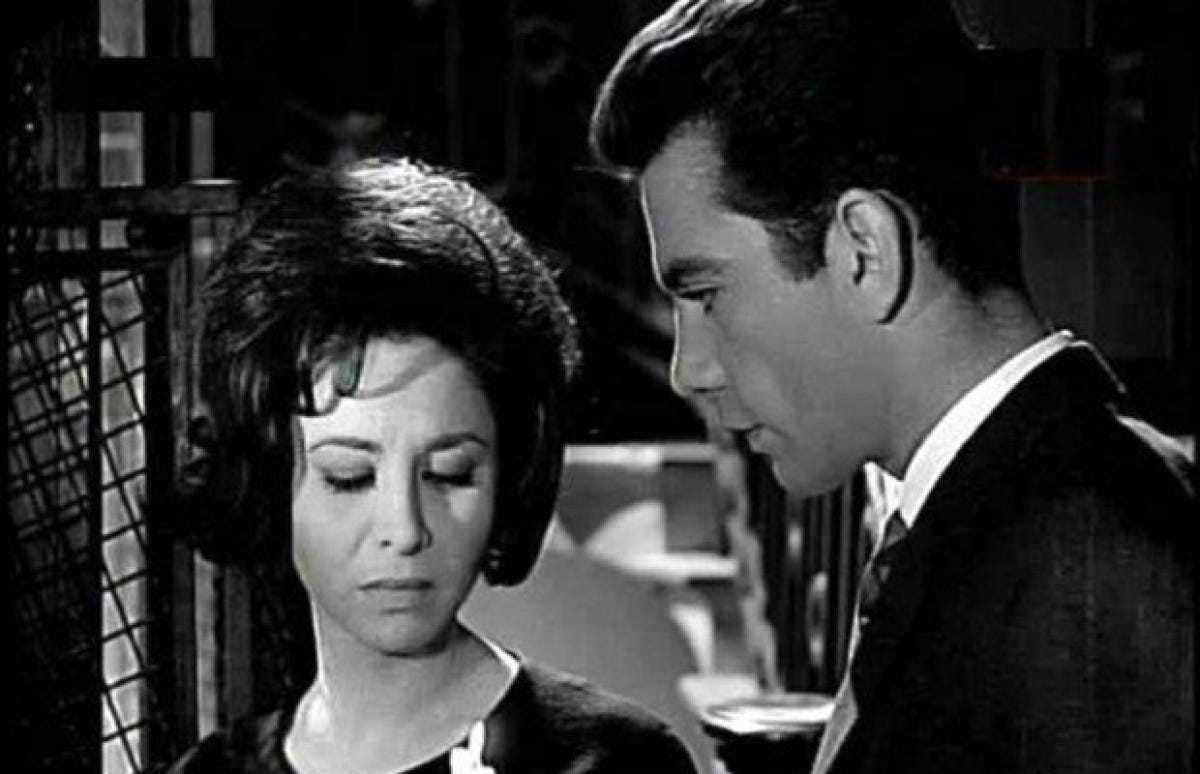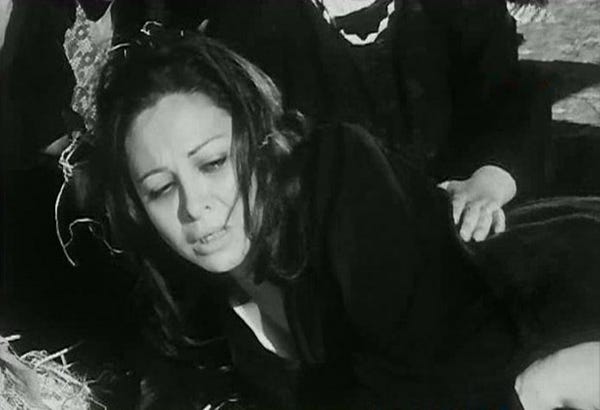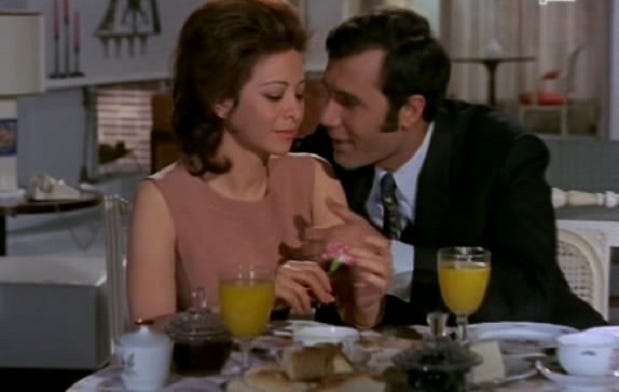Seven Times Faten Hamama Changed Arab Cinema Forever
On what would’ve been her 94th birthday, I wanted to celebrate these unforgettable performances by the Lady of the Arabic Screen
At the height of Faten Hamama’s fame, the Egyptian people were desperate for her to run for public office.
“I'm still an artist and I state my opinion through art. I believe that the drama picture touches and approaches people more than a political speech can.”
Her response to a potential political run in an 1984 interview, reveals how Hamama saw herself - not only as an actress, but an artist making political statements through art.
Yes, I’m aware of the modern critical assertion that all art is political, but not everyone is cognisant of or has the intention of being political when they create. The fact that she was intentional about this and realised that films were more influential on society than political leaders were (we are talking about the Middle East from the 1960s until the 1980s) makes Hamama fascinating to me.
Hamama’s career wasn’t built on glamour. She wasn’t the seductress, the bombshell, the stereotypical villain.
Her choice of roles over a career spanning more than 60 years, shows a deep interest in exploring the human psyche while pushing herself to the limits as an actress. Hamama chose films and roles that exposed uncomfortable truths.
Whether playing a victim of injustice, a fighter for women’s rights, or a woman confronting the harsh realities of love, Hamama had a way, a style where she layered emotional intelligence to her characters. Her films tackled bold and difficult themes: revenge, sexual violence, class inequality, family pressure, political repression, and female agency.
There is a reason she was dubbed The Lady of the Arabic Screen. There was no role she couldn’t play with finesse, a character that didn’t feel believable no matter how fantastical their circumstances were.
Hers was the kind of career, the version of fame, that didn’t only entertain but sought to enlighten. To me, when they speak of the age of Arab golden cinema, Hamama was it.
I see her body of work (equal in breadth only to one other Egyptian actress, Soad Hosny) as sacred to Arab cinema and tells us so much about our history as a people and as story tellers.
I’ve chosen to highlight six of Hamama’s films to celebrate her memory this week where she would have turned 94 on May 27.
These films are more than cinematic milestones but cultural turning points, where outstanding writing, cinematography, and direction, coupled with Hamama’s brilliant performances helped to redefine how women and Arab identity were shaped on screen.
On her birthday, we don’t just celebrate her memory - we recognize her ongoing influence on filmmakers, actors, and audiences across the Arab world and beyond.
Struggle in the Valley (1954)
In a rural Egyptian village, a principled young engineer returns home and uncovers corruption linked to a powerful landowner. As he fights for justice, he falls in love with the landowner’s daughter, played by Hamama. The film explores themes of class conflict, moral courage, and forbidden love.
The film also holds great significance to the lore of Hamama in Arab pop culture.
Struggle in the Valley marked the first on-screen pairing of Hamama with the great actor Omar Sharif - the man who would become her husband.
Sharif was an unknown actor at the time making his onscreen debut opposite Hamama who was already established. Rumour has it that Hamama was hesitant about the casting of Sharif, concerned that the film’s success could be jeopardized by pairing her with an inexperienced actor.
Hamama insisted on seeing a screen test before approving the casting. It’s said that once she saw Sharif on screen, she changed her mind.
Their on-screen chemistry quickly turned into a real-life love affair. They married the following year in 1955, and remained a high-profile couple until their divorce in 1974 - though Sharif later stated in several interviews that he never stopped loving her.
Their relationship remains one of the Arab world’s most legendary love stories.
The Nightingale’s Prayer (1959)
Hamama plays Amna, a woman seeking revenge for her sister’s death at the hands of a predatory employer. Her performance is raw, restrained, and emotionally devastating. Based on a novel by Taha Hussein, the film explores themes of honor, guilt, and personal awakening, and was Egypt’s entry to the 10th Berlin Film Festival - a pivotal moment in the international recognition of Arab cinema.
The Open Door (1963)
Rooted in feminist themes, Hamama plays Laila, a young woman torn between tradition and independence in a post-colonial Egypt. Adapted from Latifa al-Zayyat’s revolutionary novel, the film reflects the dreams of a changing nation and remains one of the most powerful and accurate depictions of a woman’s personal and political awakening in Arab film.
The Sin (1965)
A masterclass in minimalist realism, this film follows a peasant woman who becomes pregnant after a sexual assault and is met with silence and cruelty. Hamama’s performance is subtle, soulful, and searingly human. The Sin was nominated at Cannes and is widely considered one of the most important films in Arab cinematic history.
The Thin Thread (1971)
In this emotionally charged romantic drama, Hamama plays Maha, a woman who is seduced and betrayed by a wealthy man, only to be drawn back into his orbit. The film explores themes of toxic masculinity, class divides and emotional and domestic abuse. Hamama’s performance was praised for its subtle, emotionally layered portrayal of a woman caught in a deeply unequal and toxic relationship.
I Want a Solution (1975)
This socially charged courtroom drama follows Doria, a woman trapped in a loveless marriage, fighting a legal system that denies her the right to divorce. Hamama’s performance was so compelling, the film led to real legislative reform in Egypt - something Hamama was a big advocate for.
Mouths and Rabbits (1977)
As Nima, a poor woman resisting a forced marriage in an overcrowded household, Hamama portrayed a fairly common scenario Egypt’s working class. The film sparked national conversations about poverty, overpopulation, education and the choices of women are in Egypt’s working class are faced with.





